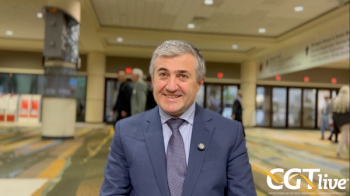
Stem cell therapy closer to reality
The dream that stem cell therapy may someday be used to protect against or restore glaucoma-related vision loss seems to be moving closer to reality.
"Until recently, the use of stem cells to treat any human disease was a futuristic idea," said Dr. Martin, professor of ophthalmology, Cambridge University Centre for Brain Repair, Cambridge, England. "However, the concept is no longer science fiction. Clinical trials of stem cell therapy in various diseases, including for the treatment of macular degeneration, are about to begin."
For glaucoma management, stem cell-based therapy might be used to achieve neuroprotection or for retinal ganglion cell (RGC) replacement or repair. A variety of stem cell candidate sources may be considered for these therapeutic uses. Embryonic stem cells, which are being used in the initial clinical trials for other diseases, have the advantage of lower tumorigenic potential compared with other sources.
However, as advances are made in controlling tumorigenicity, adult stem cells derived from mesenchyma, brain, and retina may represent a more attractive alternative. These adult cell sources would avoid the ethical concerns attached to embryonic stem cells and could allow use of autologous cells that would avoid issues of graft rejection and the need for long-term immunosuppressive therapy, Dr. Martin said.
Inducible pluripotent stem cells are another promising source. These are derived from adult mature cells and have a capacity similar to embryonic cells to be differentiated into many different cell types but without the ethical issues accompanying embryonic cells, he added.
"In early research, use of retroviruses to promote dedifferentiation of inducible pluripotent stem cells was accompanied by problems with tumor development," he continued. "However, this issue may be overcome [by] using proteins as switches rather than viruses."
Dr. Martin observed that the best argument for conducting research to develop stem cell therapy for neuroprotection is based on the multimodal benefits that stem cells can provide.
"If stem cell therapy is going to be useful for neuroprotection, it has to offer something more than what can be achieved with other approaches," he said. "We know stem cells can produce a complex cocktail of neurotrophic factors as well as modulate the immune system and promote myelination. It is the potential power of multiple protective mechanisms that makes the use of stem cells so attractive."
"The oligodendrocyte precursor cells are not very translatable because they are isolated from the brain," he said. "However, we have also done research with more easily isolated mesenchymal stem cells, and they have shown strong neuroprotection in models of experimental glaucoma as well as in other neurological diseases."
Based on the evidence available so far, stem cell neuroprotection in glaucoma appears very feasible, according to Dr. Martin.
"However, safety will be key and demonstrating clinical effectiveness of potential neuroprotectants in humans remains a major problem," he said. "It is one thing to have an approach that works in animals and another to prove its efficacy in humans."
With safety in mind, the use of encapsulated cells that could release soluble protective factors is of particular interest. This approach would circumvent the potential risks of cellular integration into the host eye as well as allow for device removal if adverse events occur, and it is already being investigated in clinical trials for retinitis pigmentosa and dry AMD using human RPE cells modified to secret ciliary neurotrophic factor (NT-501, NeuroTech).
Animal studies also have been undertaken investigating the potential of using stem cell therapy for neuronal replacement in which the challenge is not only to achieve successful transplantation and cell survival but also to promote stem cell differentiation into neurons. However, there is evidence this can be achieved, said Dr. Martin.
In a study conducted in an ocular hypertensive rat model, Dr. Martin and colleagues showed that Müller stem cells isolated from postmortem human retinas differentiated into mature neurons. Success is also being achieved in research being conducted to identify methods for modulating the retinal environment in order to facilitate retinal integration of the transplanted stem cells, recognizing that Müller glia pose a major barrier to engraftment, and to enhance neurite outgrowth.
"Trials of stem cell repair for other diseases are already or soon to be under way, but glaucoma is a particularly difficult eye disease to treat in terms of replacing functioning cells," Dr. Martin said.
fyiKeith Martin, MD
E-mail:
Dr. Martin has no financial interest in the subject matter.
Newsletter
Stay at the forefront of cutting-edge science with CGT—your direct line to expert insights, breakthrough data, and real-time coverage of the latest advancements in cell and gene therapy.

















































